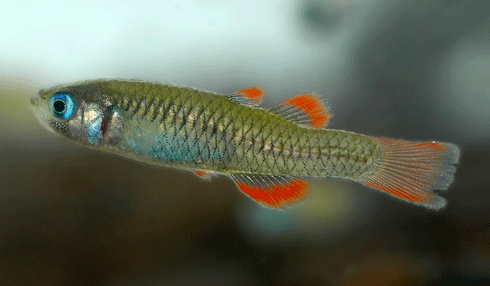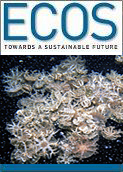
|
Published: 17 September 2012
Tiny Aussie fish among 100 most endangered species
The world’s last population of tiny red-finned blue eye living in artesian springs in central Queensland has been included in the new International Union for Conservation of Nature (IUCN) ‘Priceless or Worthless’ report – an initiative to highlight the state of the planet’s 100 most endangered species.

|
|
Red-finned blue eyes are only found in one small network of springs in central Queensland. Credit:
© Dr A. Kerezsy
|
According to Bush Heritage Australia’s aquatic ecologist Dr Adam Kerezsy: ‘The status of red-finned blue-eye – endangered under all relevant Australian legislation and critically endangered by the IUCN – means that all attempts to conserve the species need to be implemented.’
Dr Kerezsy adds that in addition to restoration work being carried out at Bush Heritage Australia’s Edgbaston reserve in central Queensland, trial captive populations should be established.
The IUCN top 100 report highlights the critical state of global biodiversity and the danger of irreversible tipping points that species face in the absence of conservation action.
The vividly coloured red-finned blue-eye was discovered in 1990 and is only known from Edgbaston, the location of Australia’s most ecologically diverse network of inland springs. The springs are listed as a nationally endangered ecological community under the federal government’s EPBC Act and provide refuge for dozens of species found nowhere else in the world.
Invasion of the springs by introduced Gambusia (mosquitofish) threaten the remaining populations of the endangered native species.
Bush Heritage’s on-ground conservation work has focused on using methods to remove the gambusia from the springs, relocating the red-finned blue eye to safer areas and, most recently, constructing barriers around springs to prevent migration during flooding.
The Priceless or Worthless report, an initiative of the IUCN and the Zoological Society of London, was launched at the recent IUCN World Conservation Congress in South Korea.
Maintaining healthy populations of other Australian freshwater fish species such as the Murray Cod will require Australians to become more involved in river health, according to Australian-based not-for-profit group, the International RiverFoundation.
‘The reality is rivers are the refuges of so many precious Aussie native species,’ says CEO Matt Reddy.
The group is coordinating a ‘Rivers Matter’ community event to mark the global observance of World Rivers Day on 30 September. The event calls on all Australians to reconnect with their local rivers by photographing a favourite spot and contributing to a huge online photo ‘wall’.
Celebrities including comedian Wil Anderson, author Di Morrissey, marathon swimmer Tammy van Wisse and musician Ami Williamson are backing the Rivers Matter initiative. Sixty countries across the globe will participate in World Rivers Day.
Chairman of the International RiverFoundation, Professor Gary Jones, says the science is telling us constantly that ‘we can improve our waterway health and therefore the health of our bays’.
‘We’ve clearly got the skills and know how to revive our rivers. It’s up to us to work together.’
Sources: Bush Heritage Australia and International RiverFoundation



